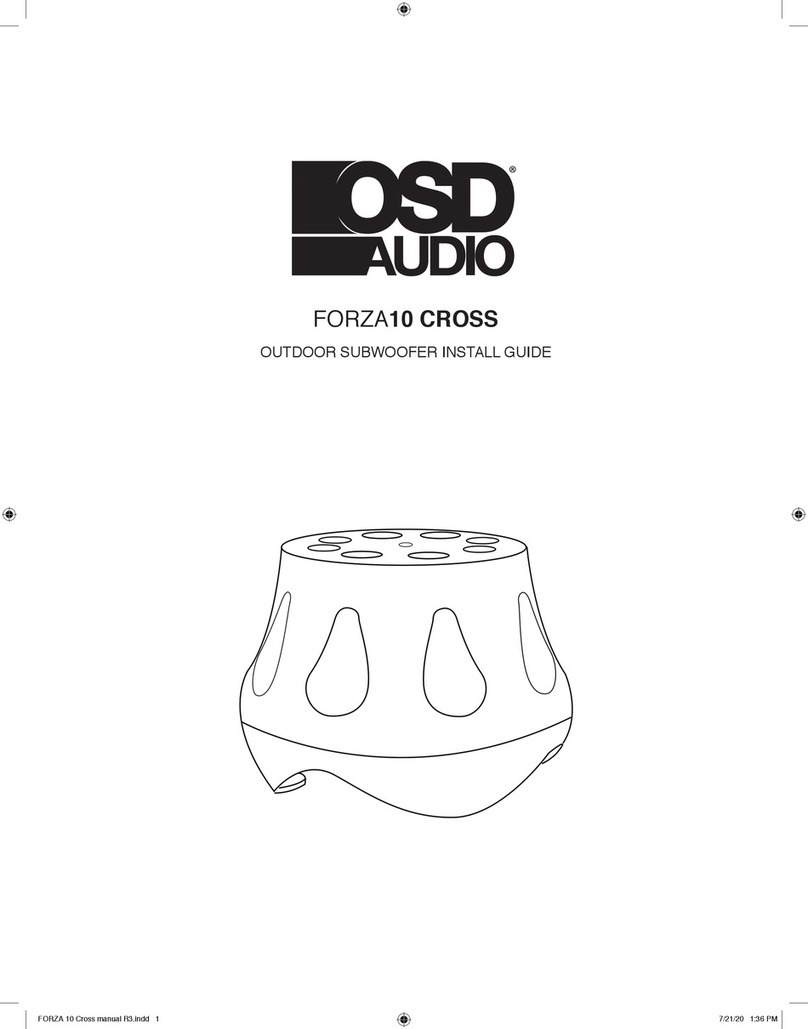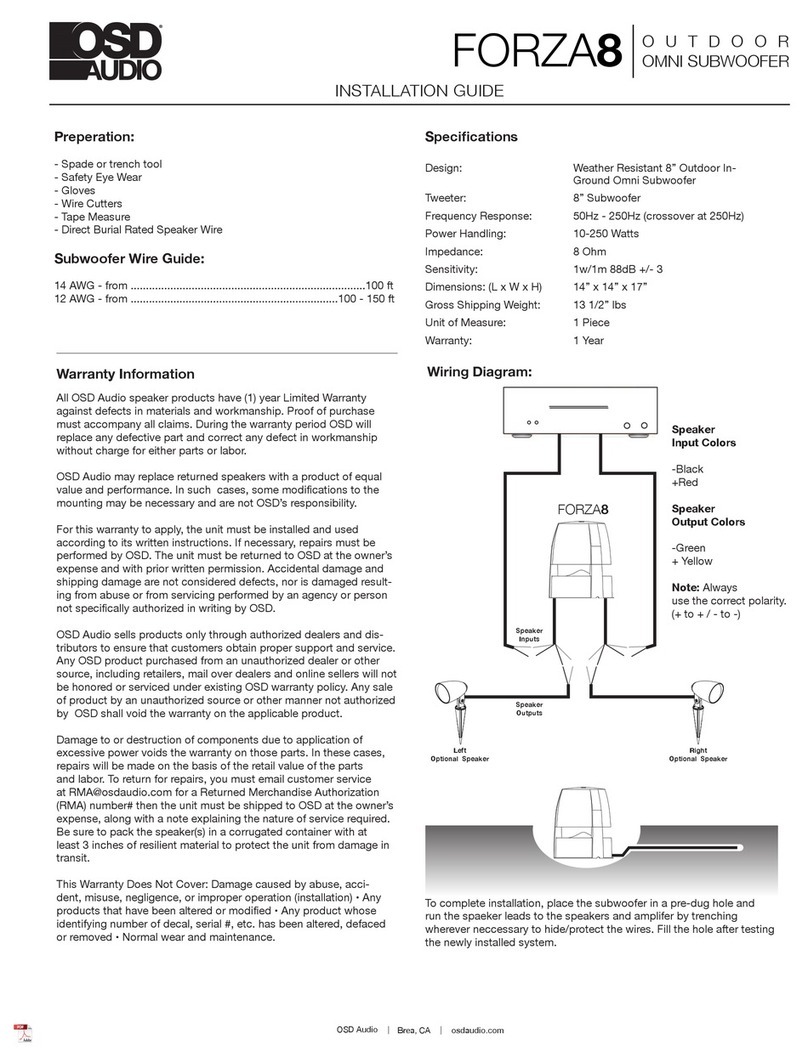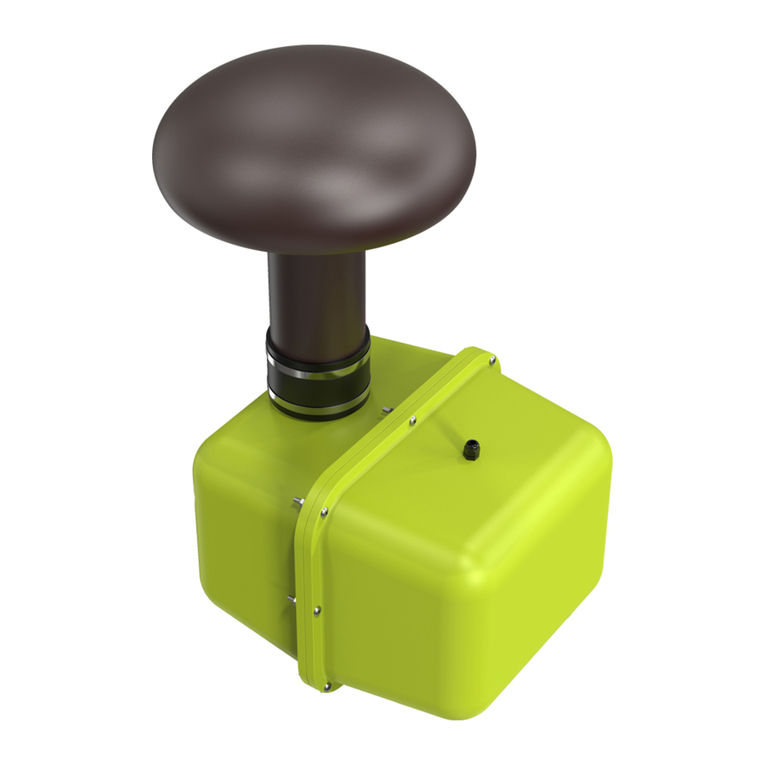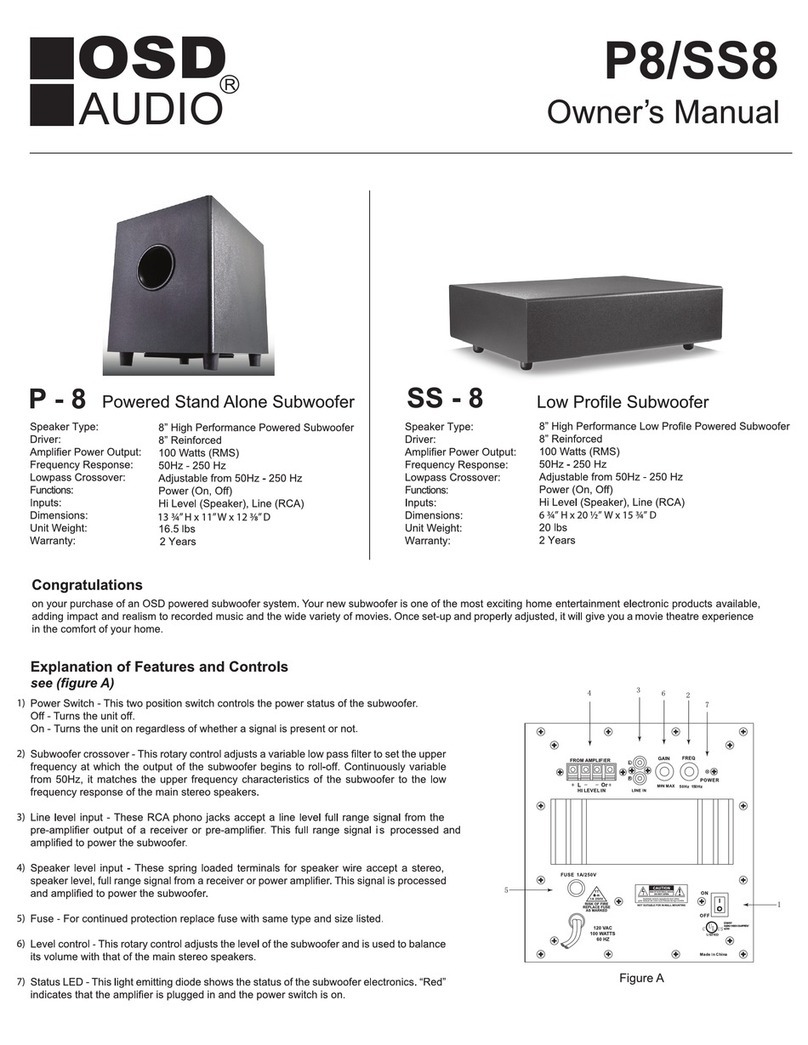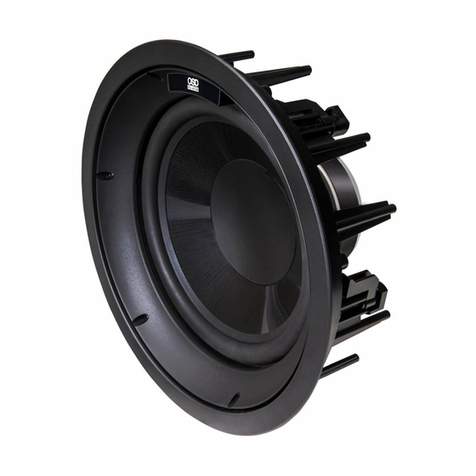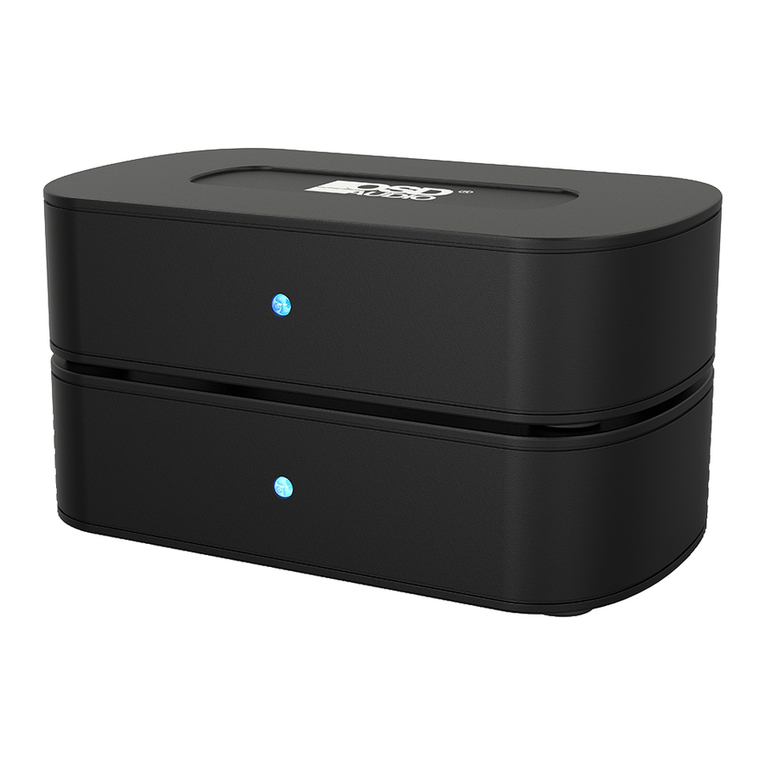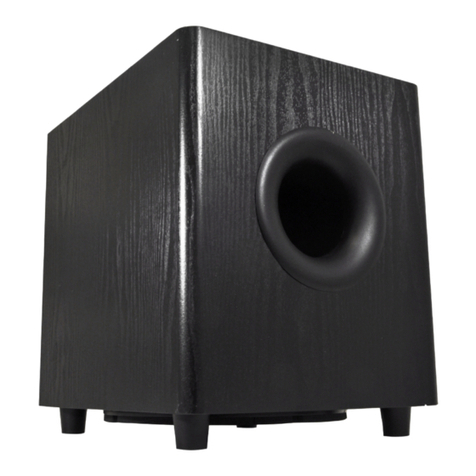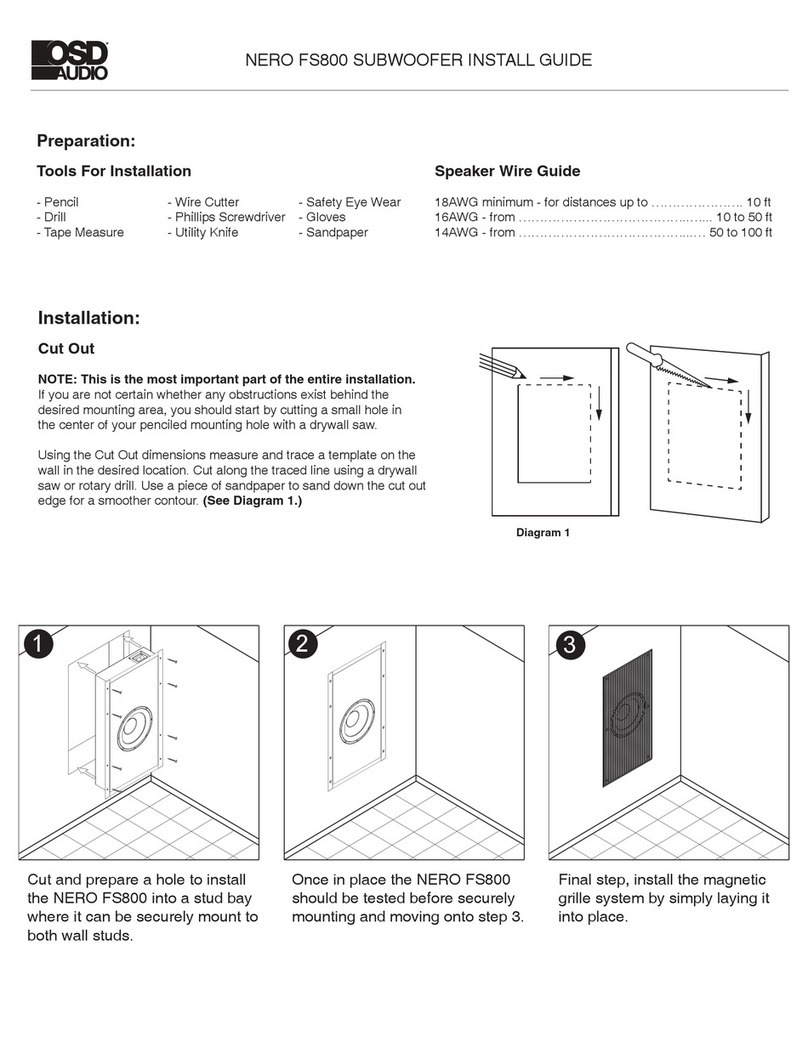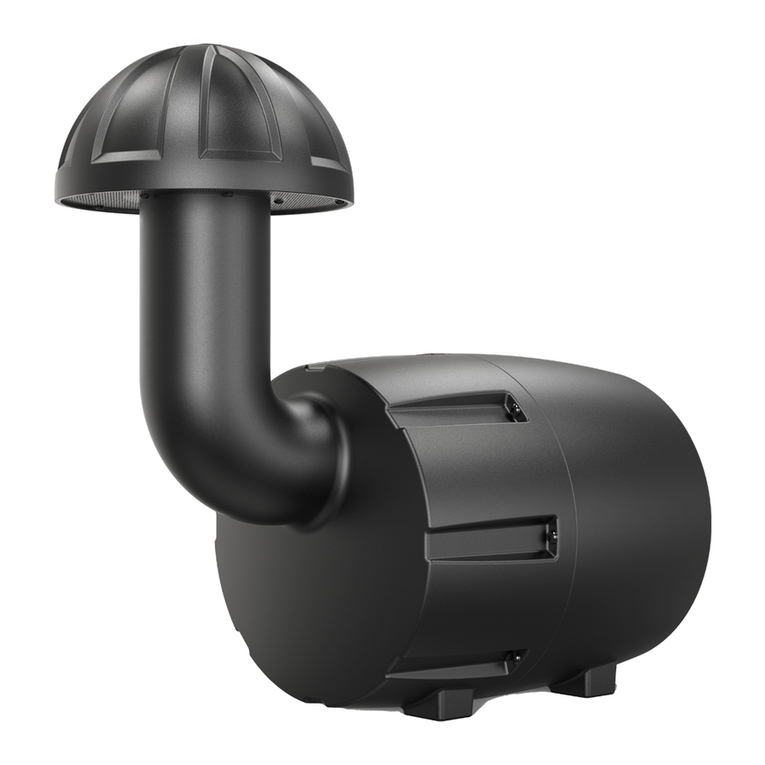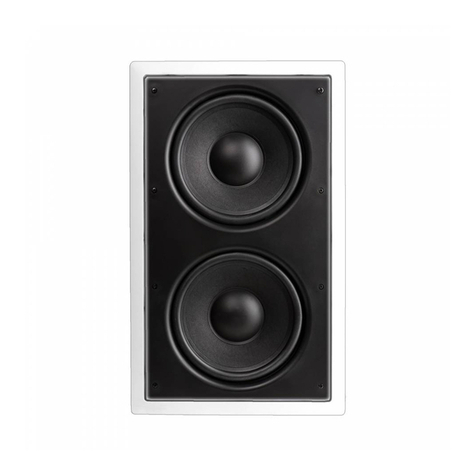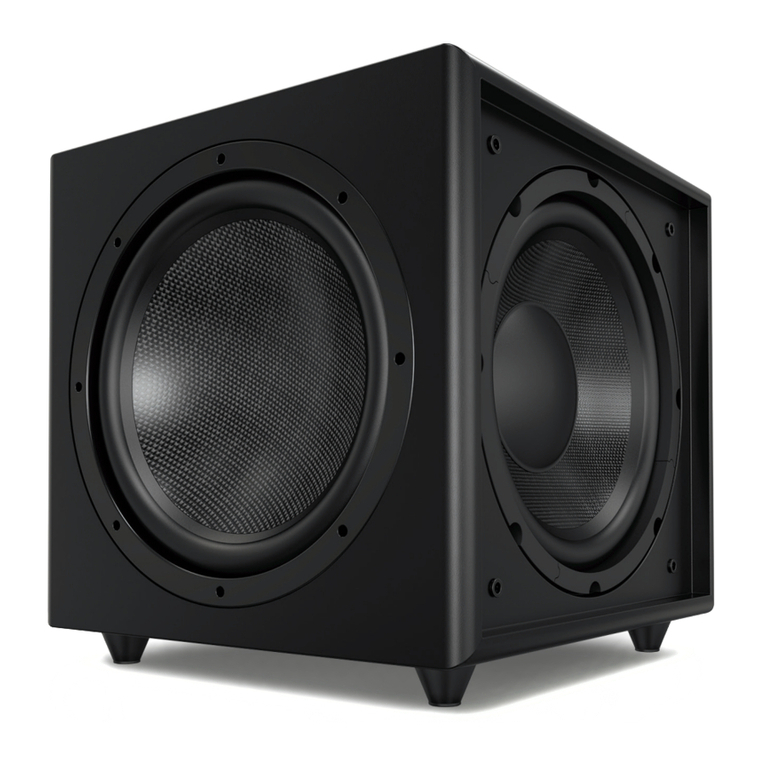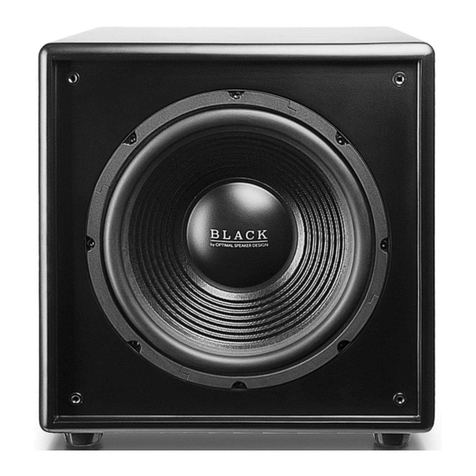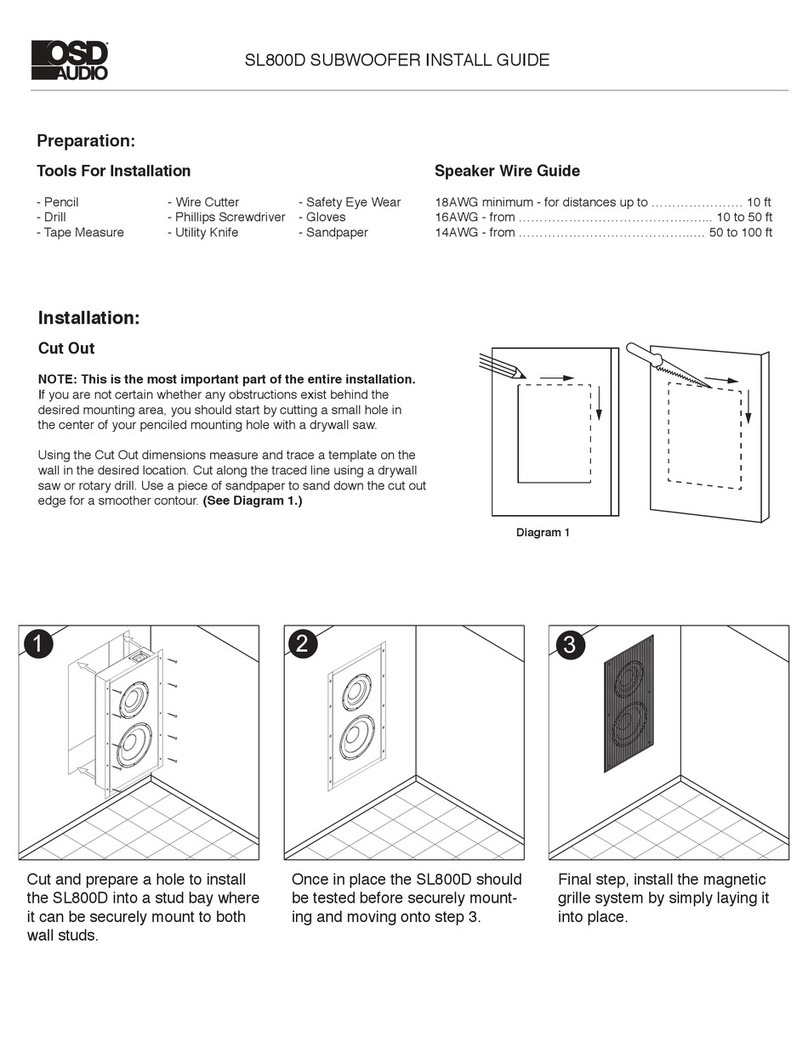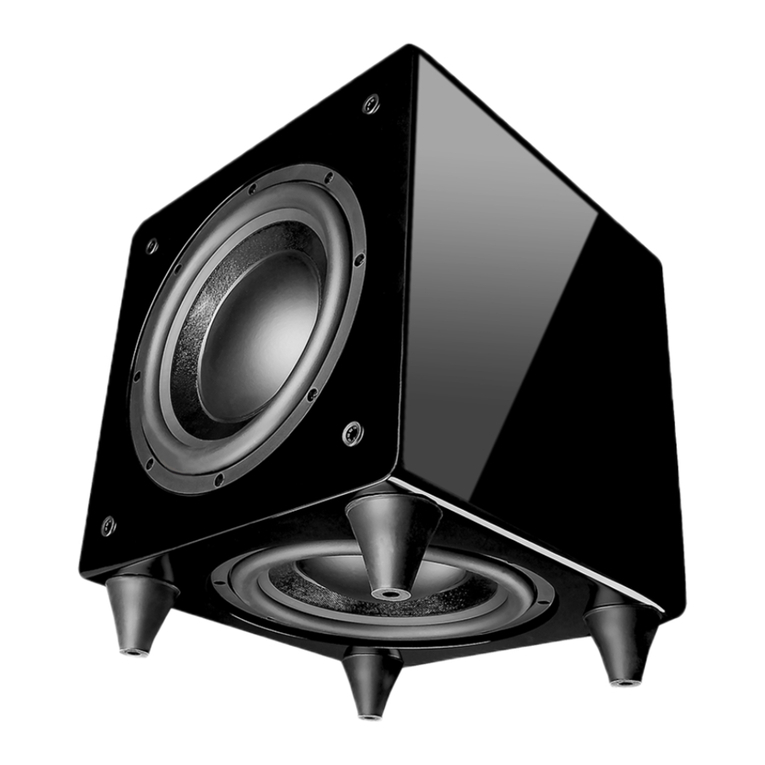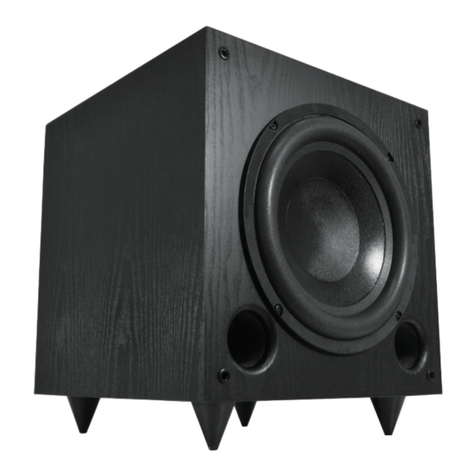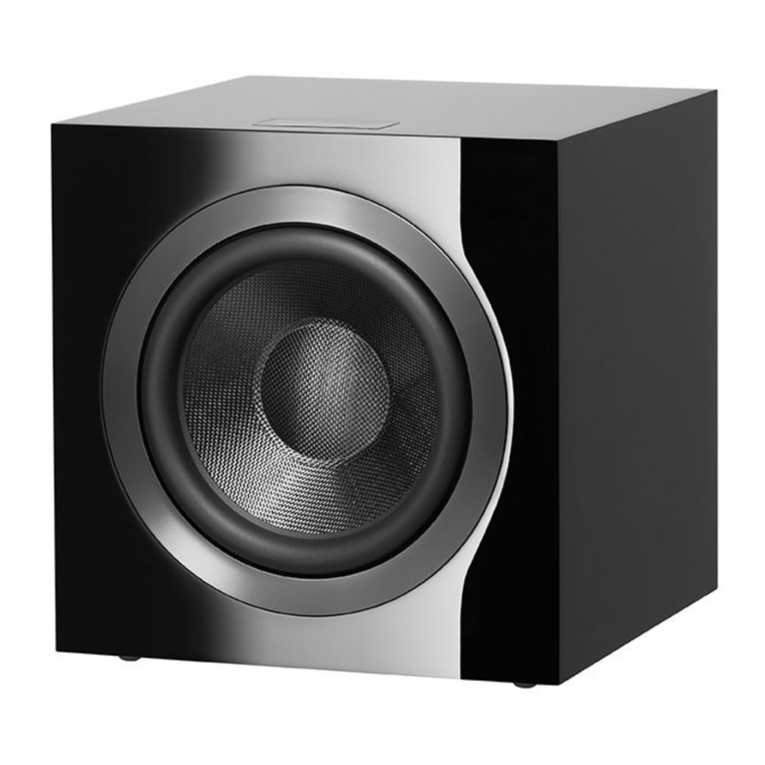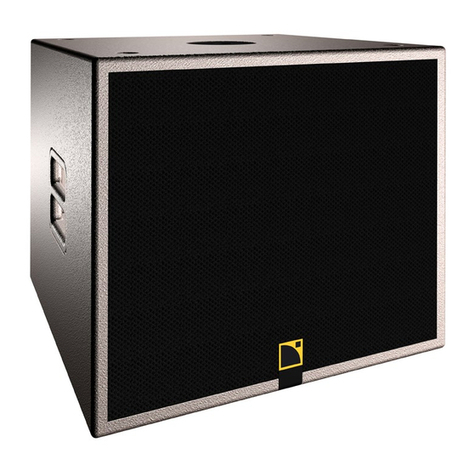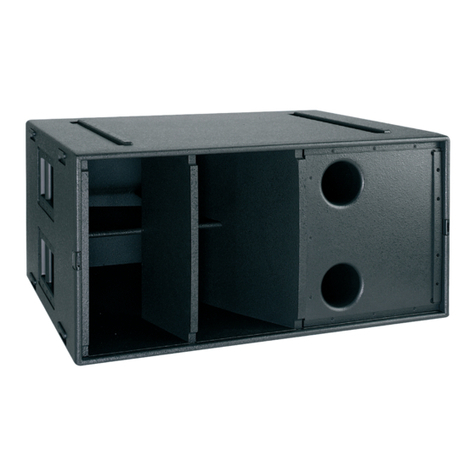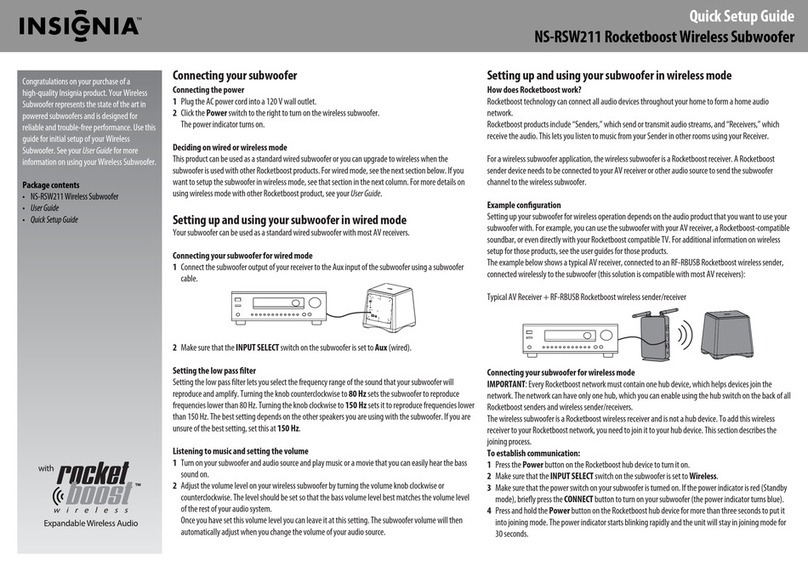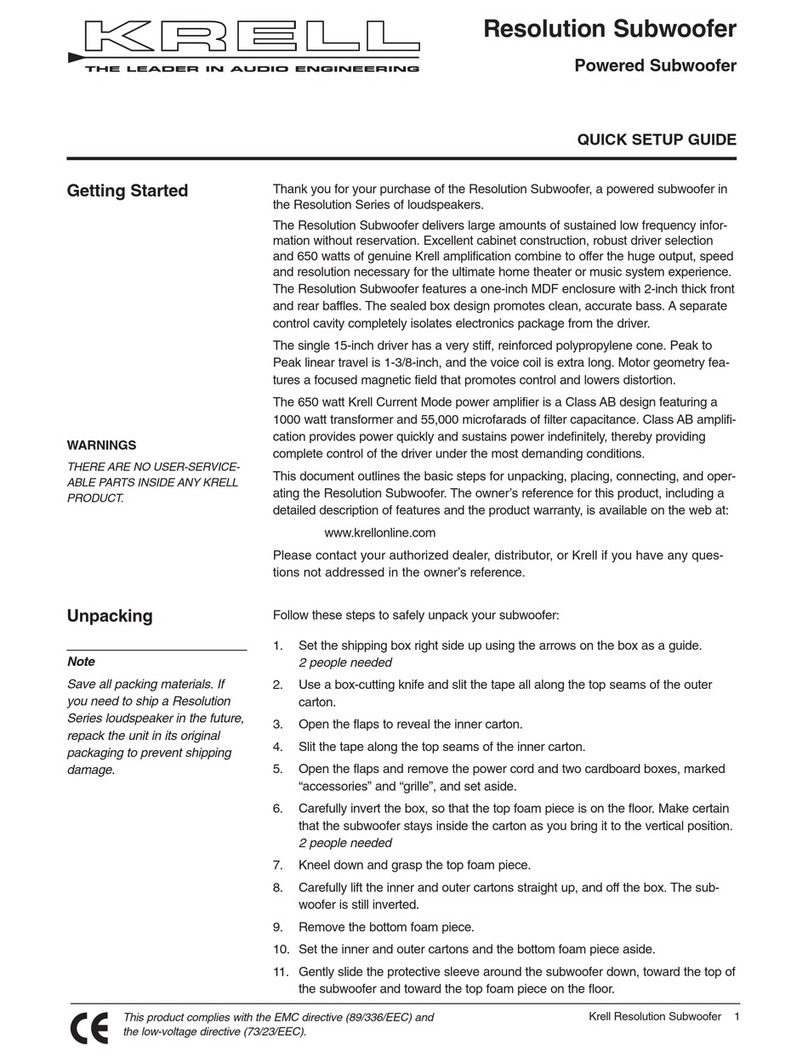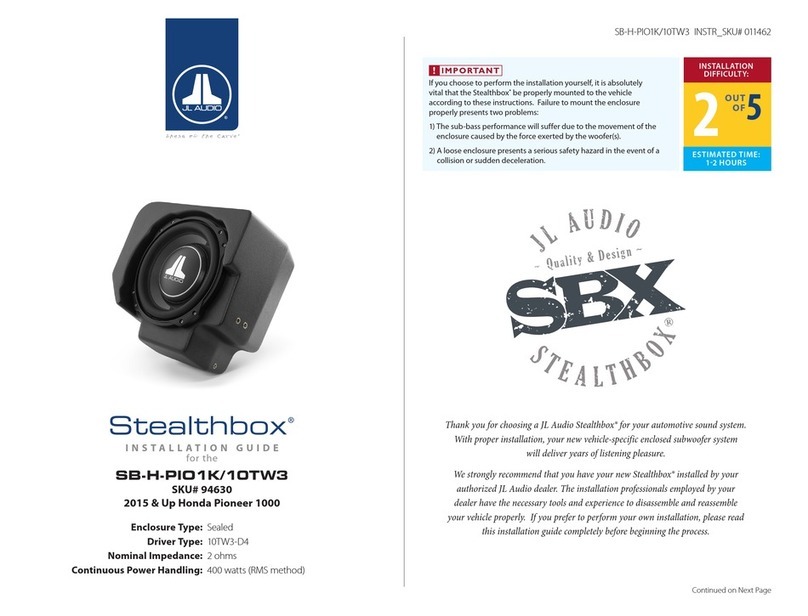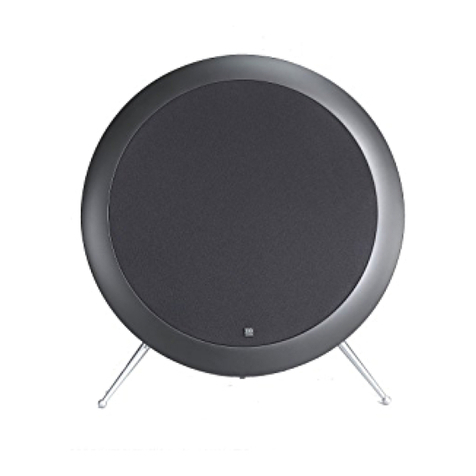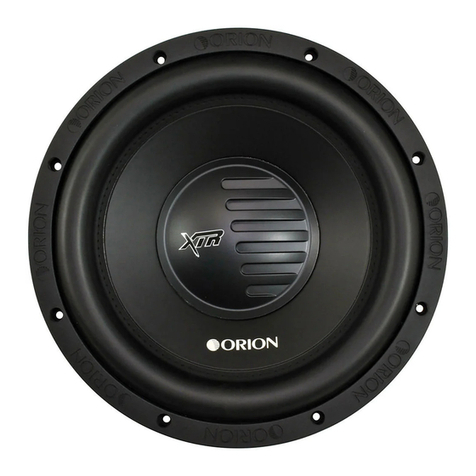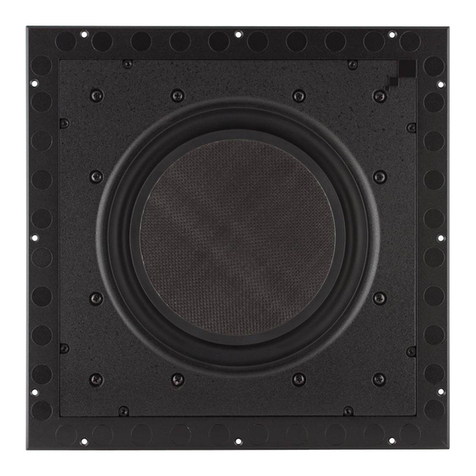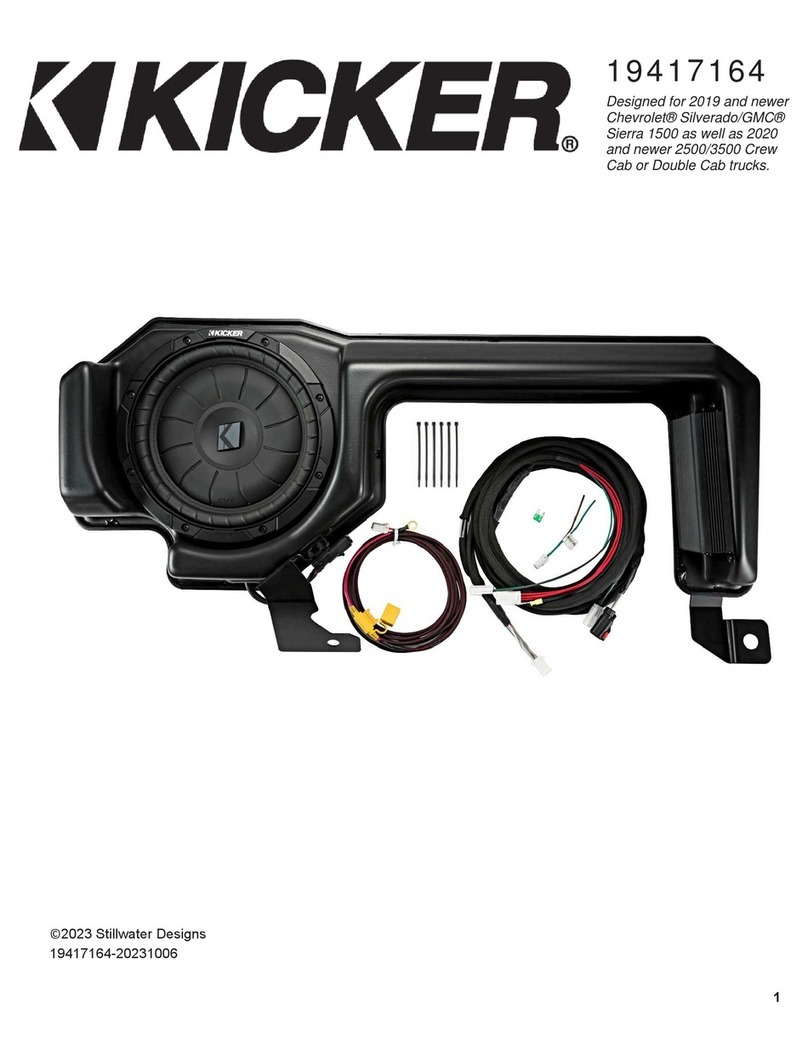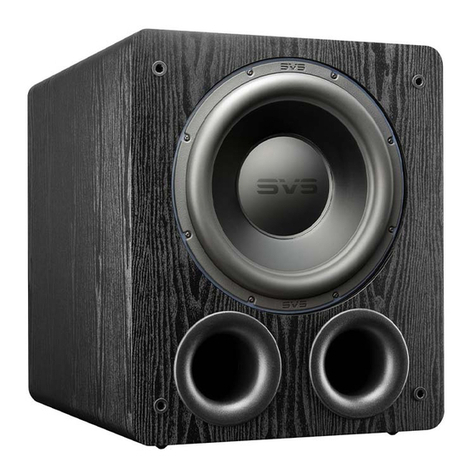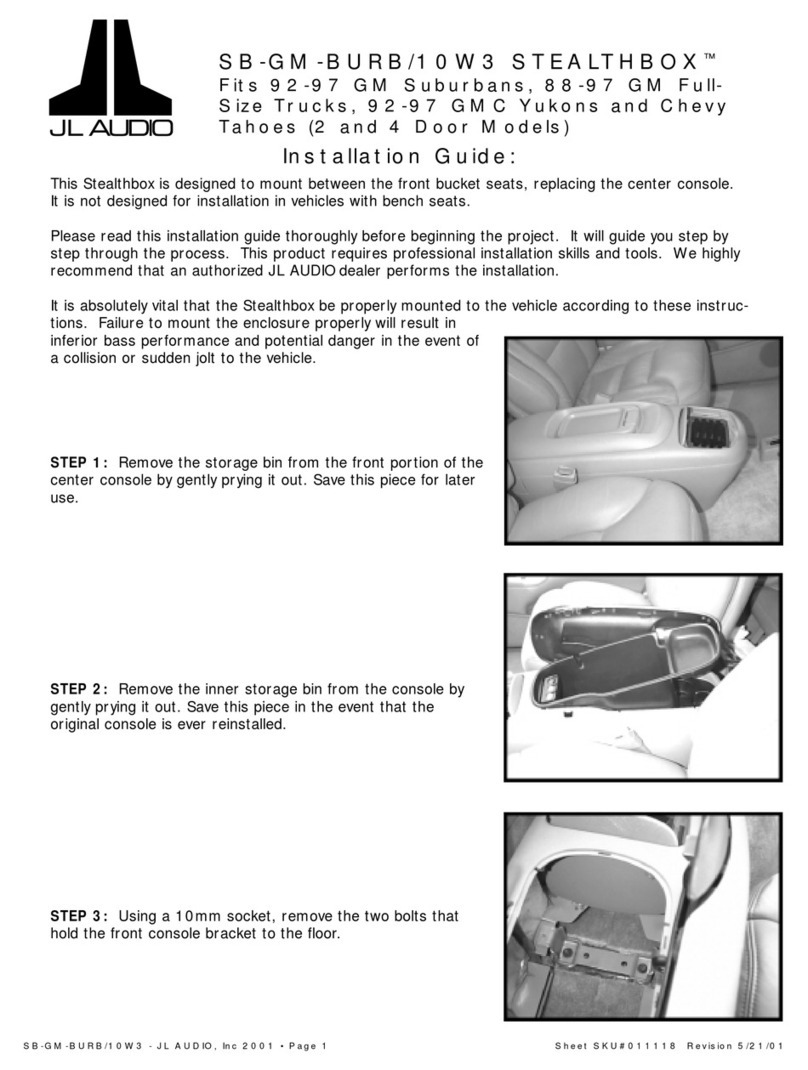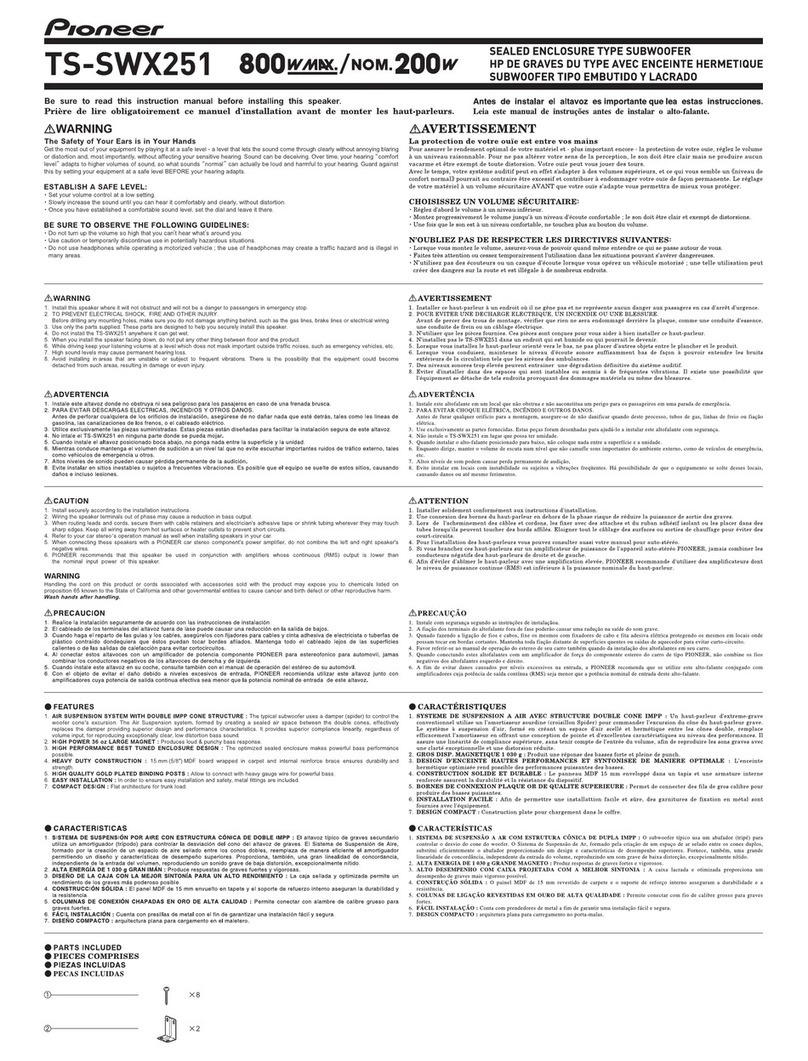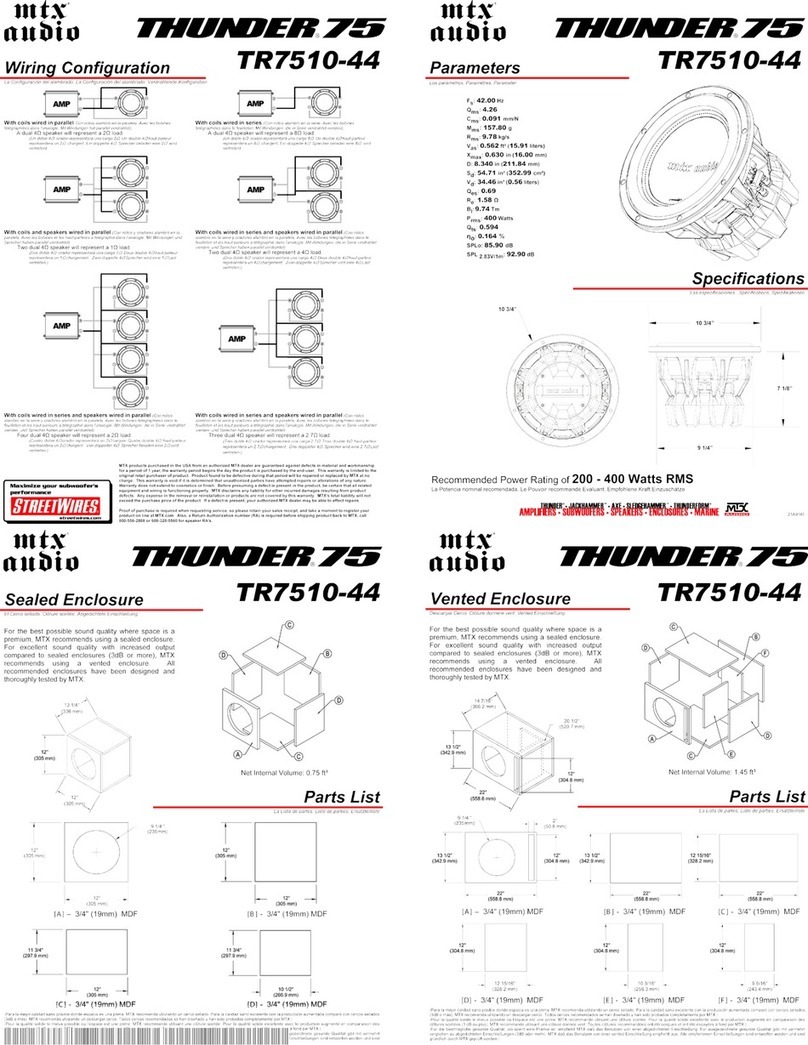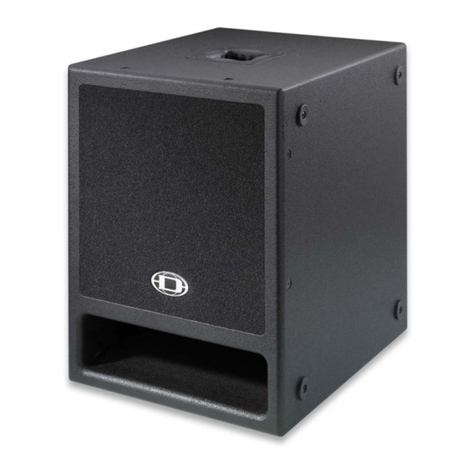
System
Configurations
The
following
pages
show
typical
connections
that
you
might
make
in
your
installation.
They
show
how
inputs
and
outputs
of
the
Ps88
sub
are
connected
to
your
pre-amplifier
or
receiver.
Connections
to
a
pre-amplifier’s
subwoofer
output
If
your
pre-amplifier
has
a
subwoofer
output(often
labeled
LFE
for
Low
frequency
effects)
it
can
be
connected
to
the
subwoofer’s
Left(Mono)
input
as
shown.
This
is
the
simplest
and
recommended
connected
in
the
same
way.
Specification
Amplifier
Outpt
eienen
N
ae
aa
aana
Eaa
eRe
Maximum
Power
Consumption?®...........ccccecceseceseeeeeeeeeeeeseeeeeeeeseneeseaeeeaeeeeaeeeeeseaeeeaeeees
Frequency
Response:
High
Cut
Filter:
INPUt:
SENS
HIVIY
arora
vevenimedeater¥s.
i
eee
iaaa
EN
aAa
E
Signal
to
NOSE
S
eara
eer
E
a
Aa
IEEE
AEE
Typical
THD:..
Input
Signal:...
Dimensions:
Total
Weight:
Box
Material:
The
subwoofer
will
play
the
low
frequency
range
and
an
independent
subwoofer
volume
control.
Make
sure
this
is
correctly
adjusted,
and
that
the
Ps88
subwoofer’s
crossover
frequency
is
set
to
100Hz.
This
is
by
no
means
an
iron-clad
rule,
rather
it
is
a
good
starting
point.
You
can
set
the
subwoofer’s
Bass
Level
control
on
your
receiver
to
0
dB,
and
then
use
the
pre-amplifier’s
subwoofer
level
control
for
normal
and
routine
adjustments.
PRE-AMPLIFIER
R
MAIN
SUB/LFE
OUT
OUTPUTS
AMPLIFIER
INPUTS
TO
FRONT
SPEAKERS
sabia
ragaaesiedysstuassdes
100
Watts
RMS
(4
ohms
Impedance)
EE
E
180
Watts
25Hz-160Hz
..
5|0Hz-160Hz
adjustable.
The
crossover
can
be
bypassed
by
rotating
the
crossover
frequency
control
fully
clockwise.
en
eee
20MV-1.5V
Sees
nee
83(LFE)
8484(SUB)
..
Typical
THD:
0.4(LFE)
0.3(SUB)
.
Input
Signal:
RCA
JACK
..
Dimensions:(HxWxD)
101/2"x11
45
"x10
45”
16lbs
15mm
MDF
Board+Piano
Lacquer
EEEE
180
Watts
Subwoofer
42
OZ
..
Paper+Foam
.
2
Yrs
OSD
Audio.775
Columbia
St.Brea.CA.92821.www.osdaudio.com.Yel(888)779-4968.Fax(714)256-8300
